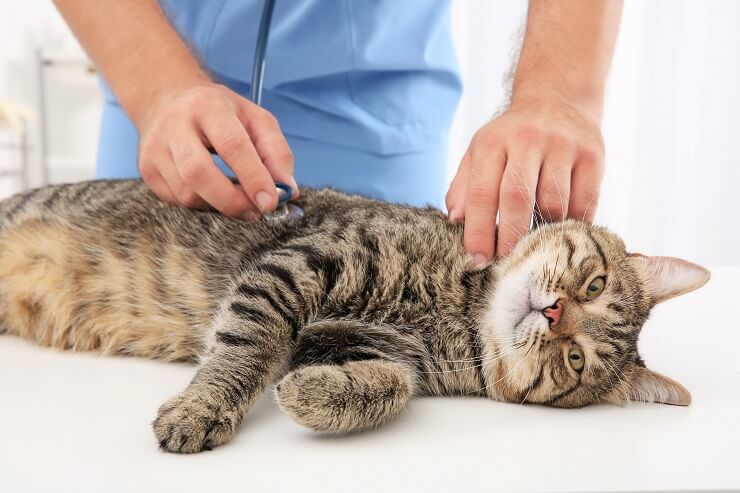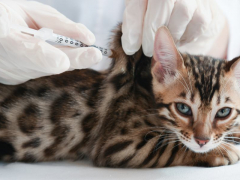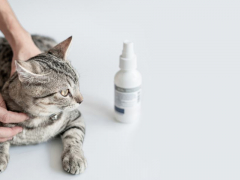Metronidazole, commonly also referred to by its brand name Flagyl, is an antibiotic and antiparasitic medication often used in veterinary medicine. In this article, you’ll learn how it works, situations where it may be prescribed most often, potential side effects to monitor for, and some frequently asked questions.
Metronidazole for Cats Overview

About Metronidazole for Cats
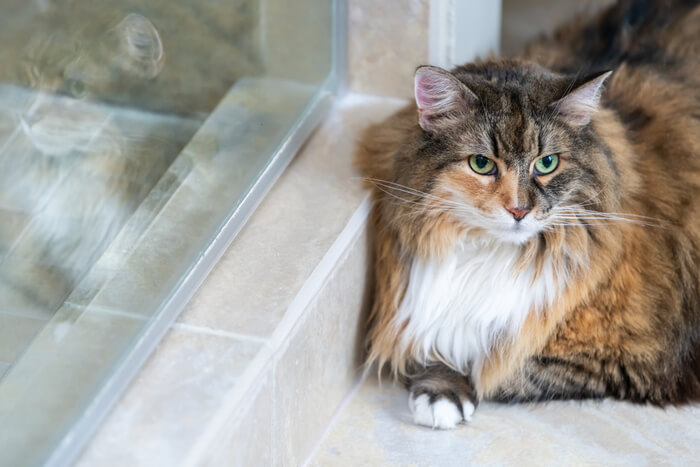
Metronidazole is an antibacterial and antiprotozoal agent.
As an antibiotic, it predominantly focuses only on a spectrum of bacteria called anaerobes, which are bacteria which require only limited oxygen, or no oxygen at all, to live. One of these bacterial types, Clostridium, is a common inhabitant of the digestive tract.
As an antibiotic, metronidazole is concentration-dependent, meaning it only kills bacteria if it reaches certain concentration levels within the body. While its method of action is not fully understood, it is thought to exert its activity against susceptible bacteria through disruption of their DNA synthesis.
Metronidazole is also an antiprotozoal medication. Protozoa are microscopic single-celled organisms. An amoeba for example, is a protozoan. There are many protozoa that are parasitic, with common ones in cats including Giardia species and Tritrichomonas foetus. While its method of action against protozoa is not well understood, it has been extensively documented as a therapy.
While not fully understood or well-documented, metronidazole is additionally thought to have some effect on cell-mediated immunity, a type of immune response that can lead to inflammation. Its use as an added therapy for inflammatory bowel conditions like inflammatory bowel disease is thought to be related to this property.
What Does Metronidazole Do for Cats?

Metronidazole is used to treat bacterial and protozoal infections, as well as hepatic encephalopathy.
Metronidazole is most commonly known as an “anti-diarrheal” medication when used in veterinary medicine and is always used in an off-label manner in pets.
While there is no doubting its usefulness in many cases when treating bouts of diarrhea in pets, its mechanism of action for how it does this is not fully understood.
One of the most popular theories about why metronidazole addresses diarrhea is that it is actually treating small intestinal bacterial overgrowth.
The intestinal tract contains a wide variety of microorganisms, like bacteria, in a careful balance. Overgrowth of one group of bacteria, Clostridium for example, can lead to signs of diarrhea. A bacterial imbalance may occur as a result of diarrhea caused by another insult to the GI tract or it may be the primary cause of diarrhea.
In this case, metronidazole is thought to be killing overgrowth of anaerobic bacteria that may be causing bacterial infections, or otherwise contributing to the signs, like Clostridium. Clostridial bacteria do contain an enterotoxin that may cause intermittent signs of soft stool or diarrhea.
Another proposed mechanism of action for metronidazole’s efficacy in cases of diarrhea is the suspected, but poorly understood effect on cell-mediated immunity. This anti-inflammatory effect may help to calm bowel inflammation that is present.
Although metronidazole is often used empirically to treat diarrhea (meaning it is used as a treatment expected to show benefit even when the cause of disease is unknown), treatment of any condition like diarrhea will be best when the underlying cause is actually known.
This is why fecal samples are often sent out, even for indoor kitties, to rule out a common parasitic cause.
One of these parasitic causes can be the protozoan Giardia. Metronidazole can be used to treat protozoal infections caused by Giardia in cats, though it is often not the first choice. It is more often used alongside the preferred medication fenbendazole to help further reduce clinical signs and shedding of the parasite.
Another protozoan parasite, Tritrichomonas foetus, is sometimes seen as a cause of persistent diarrhea in cats, especially in kittens under 12 months of age. While it is not considered as ideal a treatment as ronidazole, many practices do not carry ronidazole commonly, so many cats may be at least started on metronidazole initially.
As suggested already, metronidazole may be used as an additional therapy for inflammatory bowel conditions, owing to its potential but not well understood effect on cell mediated immunity. Because inflammatory bowel conditions usually require long term treatment, extended use of metronidazole in this case does increase some risks of side effects.
Lastly, metronidazole may not only be used to treat infections associated with the GI tract. Anaerobic bacteria can also cause infections in other parts of the body as well. In severe cases, an injectable form of the drug may be used.
Side Effects of Metronidazole for Cats
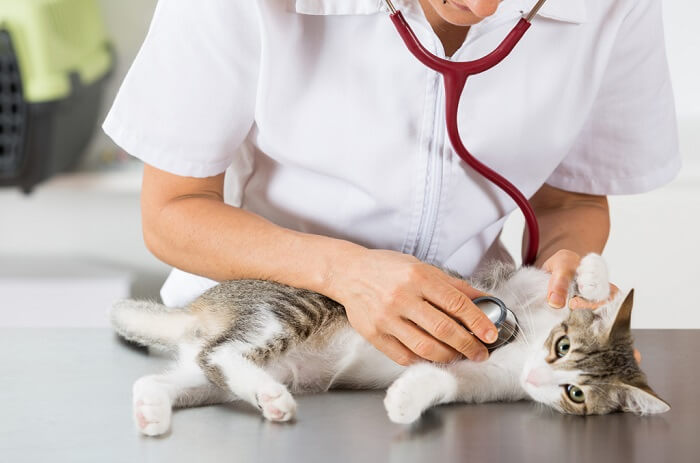
There are several side effects associated with metronidazole for cats. Due to the medication’s bitter taste, salivation is the most common side effect. Other adverse effects may occur, but they are rare.
Metronidazole is typically tolerated very well by cats as long as the dose is appropriate.
The most common side effects can include vomiting and inappetence. This may occur more often in cats owing to the bitter taste of the generic metronidazole tablet. If signs like these do occur, hiding the taste or having the medication compounded into a flavored tablet or liquid may overcome this effect.
At high doses or dosages continued for long-term periods of time, toxicity causing liver disease and neurologic toxicity signs may occur. This is usually not seen for short courses, such as for treatment of uncomplicated diarrhea, Giardia, or Tritrichomonas infections, but may become more likely with chronic courses, such as for inflammatory bowel conditions.
Metronidazole for Cats Dosage

The dosage for cats for metronidazole may vary depending on the purpose. Doses for general diarrhea may only be 5-10 mg/kg, but when treating specifically for Giardia or Tritrichomonas foetus are typically much higher.
For this reason, it’s very important to only use metronidazole as prescribed by your veterinarian.
In some cats, especially smaller kittens, the commercially available tablet sizes may be too large to provide for safe or practical dosing, making compounding the medication into very low dose tablet or liquid formulations at a compounding pharmacy more feasible.
Conclusion
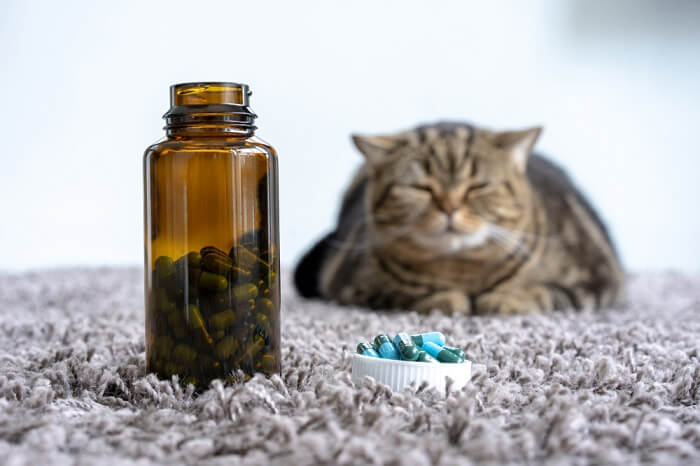
Metronidazole is a very commonly used medication in veterinary medicine. With antibiotic and antiprotozoal properties, it is often used to treat various causes of diarrhea in cats, but can be used for other types of infections.
Side effects can occur, but are usually seen much more with higher doses or prolonged courses of the medication. As with any antibiotic medication, it is always important to finish out a complete course as prescribed by your veterinarian and to never use it without discussing first with your vet.
Drug Dosing Disclaimer: We are only able to provide doses for medications that are FDA approved for use in cats and only as the label guidelines dictate. For medications that are used off-label we can only provide guidelines and safety information for use. Safe and appropriate dosing for off-label medications can only be determined by a primary care veterinarian.
We encourage you to work with your veterinarian to determine if a particular medication is appropriate for your cat. Changing or adjusting a dose for your cat on your own without consulting with a veterinarian can carry risk. We do not encourage use of medications prescribed for human use in pets without first consulting with a primary care veterinarian.
